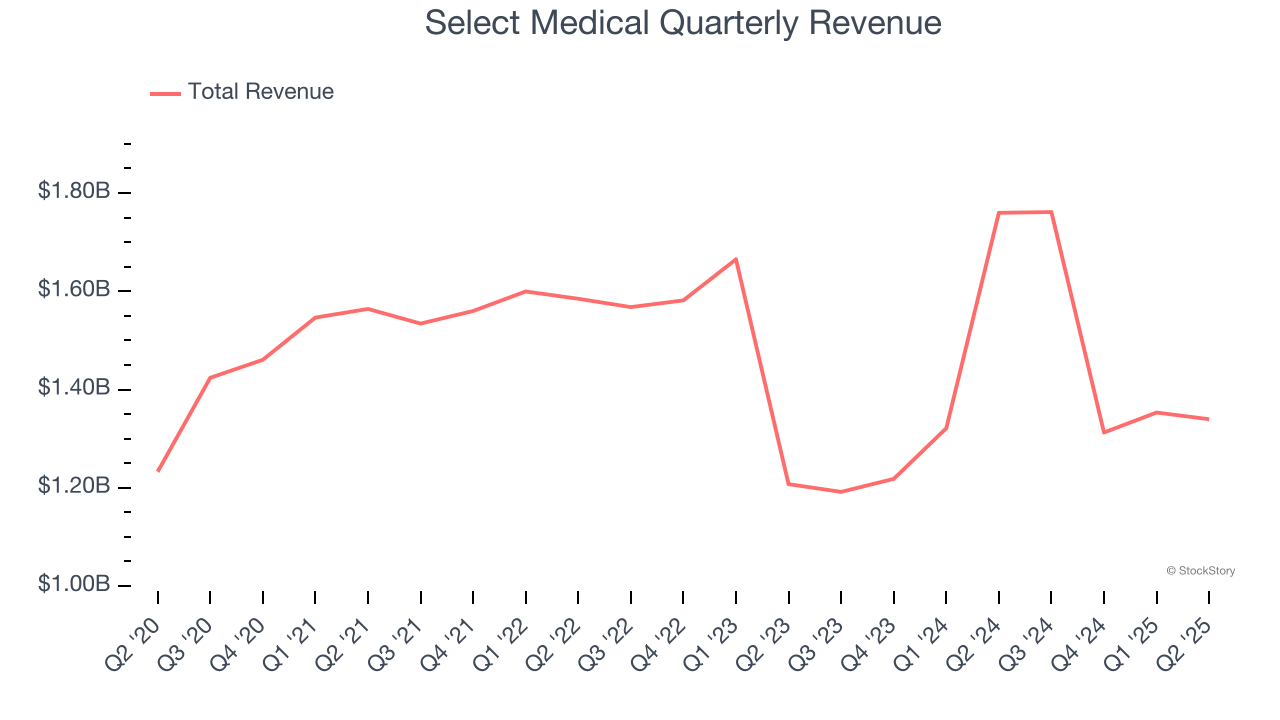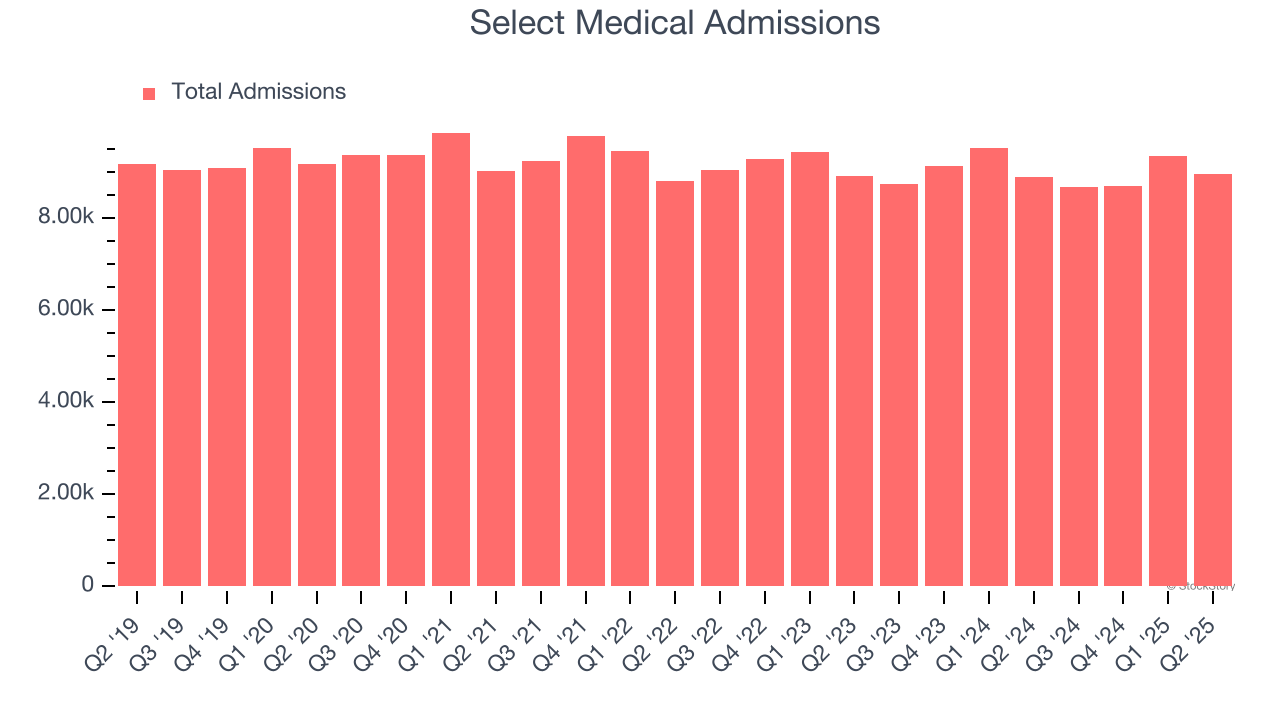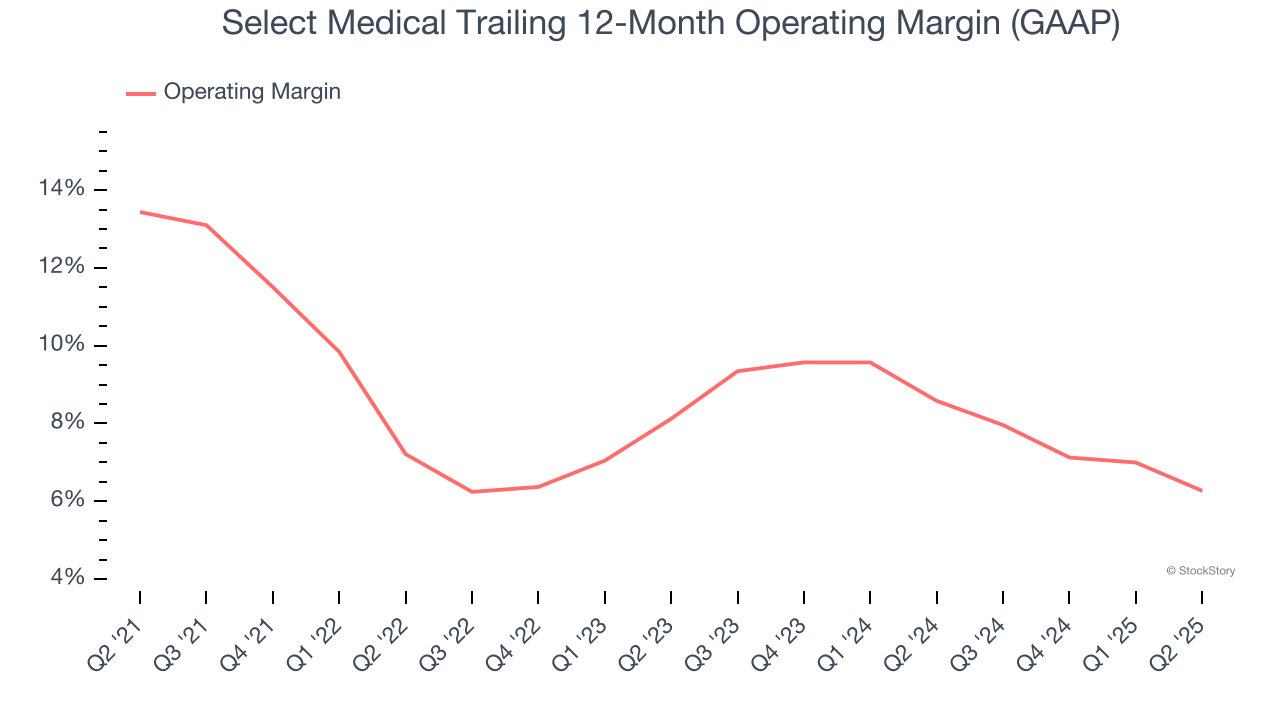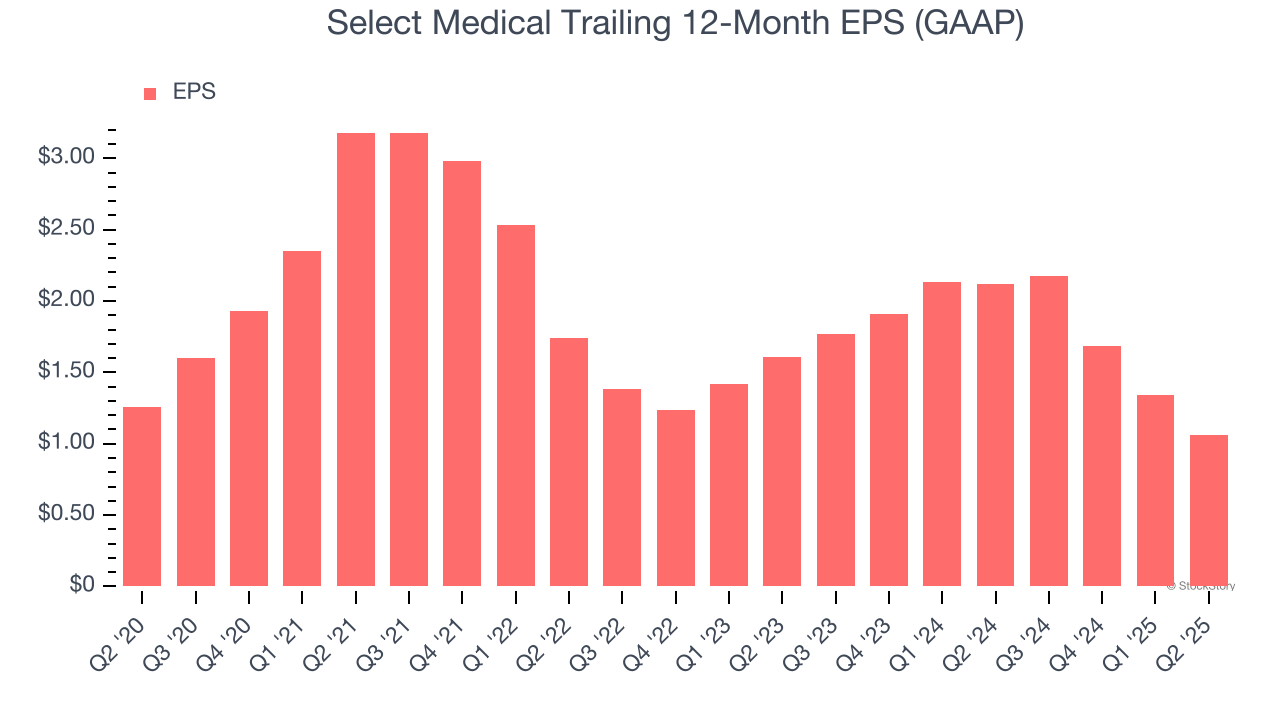
Healthcare services company Select Medical (NYSE:SEM) met Wall Street’s revenue expectations in Q2 CY2025, but sales fell by 23.9% year on year to $1.34 billion. The company’s outlook for the full year was close to analysts’ estimates with revenue guided to $5.4 billion at the midpoint. Its GAAP profit of $0.32 per share was 13.9% above analysts’ consensus estimates.
Is now the time to buy Select Medical? Find out by accessing our full research report, it’s free.
Select Medical (SEM) Q2 CY2025 Highlights:
- Revenue: $1.34 billion vs analyst estimates of $1.34 billion (23.9% year-on-year decline, in line)
- EPS (GAAP): $0.32 vs analyst estimates of $0.28 (13.9% beat)
- Adjusted EBITDA: $125.4 million vs analyst estimates of $128.4 million (9.4% margin, 2.3% miss)
- The company reconfirmed its revenue guidance for the full year of $5.4 billion at the midpoint
- EPS (GAAP) guidance for the full year is $1.14 at the midpoint, beating analyst estimates by 3.1%
- EBITDA guidance for the full year is $520 million at the midpoint, in line with analyst expectations
- Operating Margin: 6.5%, down from 9% in the same quarter last year
- Sales Volumes were flat year on year (-0.4% in the same quarter last year)
- Market Capitalization: $1.90 billion
Company Overview
With a nationwide network spanning 46 states and over 2,700 healthcare facilities, Select Medical (NYSE:SEM) operates critical illness recovery hospitals, rehabilitation hospitals, outpatient rehabilitation clinics, and occupational health centers across the United States.
Revenue Growth
A company’s long-term sales performance can indicate its overall quality. Even a bad business can shine for one or two quarters, but a top-tier one grows for years. Regrettably, Select Medical’s sales grew at a tepid 1.3% compounded annual growth rate over the last five years. This was below our standards and is a tough starting point for our analysis.

Long-term growth is the most important, but within healthcare, a half-decade historical view may miss new innovations or demand cycles. Select Medical’s performance shows it grew in the past but relinquished its gains over the last two years, as its revenue fell by 2.1% annually. 
We can dig further into the company’s revenue dynamics by analyzing its number of admissions, which reached 8,966 in the latest quarter. Over the last two years, Select Medical’s admissions averaged 1.4% year-on-year declines. Because this number is in line with its revenue growth, we can see the company kept its prices fairly consistent. 
This quarter, Select Medical reported a rather uninspiring 23.9% year-on-year revenue decline to $1.34 billion of revenue, in line with Wall Street’s estimates.
Looking ahead, sell-side analysts expect revenue to decline by 3.9% over the next 12 months, a slight deceleration versus the last two years. This projection doesn't excite us and suggests its products and services will see some demand headwinds.
Unless you’ve been living under a rock, it should be obvious by now that generative AI is going to have a huge impact on how large corporations do business. While Nvidia and AMD are trading close to all-time highs, we prefer a lesser-known (but still profitable) stock benefiting from the rise of AI. Click here to access our free report one of our favorites growth stories.
Operating Margin
Operating margin is one of the best measures of profitability because it tells us how much money a company takes home after subtracting all core expenses, like marketing and R&D.
Select Medical was profitable over the last five years but held back by its large cost base. Its average operating margin of 8.7% was weak for a healthcare business.
Looking at the trend in its profitability, Select Medical’s operating margin decreased by 7.2 percentage points over the last five years. The company’s two-year trajectory also shows it failed to get its profitability back to the peak as its margin fell by 1.9 percentage points. This performance was poor no matter how you look at it - it shows its expenses were rising and it couldn’t pass those costs onto its customers.

In Q2, Select Medical generated an operating margin profit margin of 6.5%, down 2.5 percentage points year on year. This contraction shows it was less efficient because its expenses increased relative to its revenue.
Earnings Per Share
We track the long-term change in earnings per share (EPS) for the same reason as long-term revenue growth. Compared to revenue, however, EPS highlights whether a company’s growth is profitable.
Sadly for Select Medical, its EPS declined by 3.4% annually over the last five years while its revenue grew by 1.3%. This tells us the company became less profitable on a per-share basis as it expanded due to non-fundamental factors such as interest expenses and taxes.

Diving into the nuances of Select Medical’s earnings can give us a better understanding of its performance. As we mentioned earlier, Select Medical’s operating margin declined by 7.2 percentage points over the last five years. This was the most relevant factor (aside from the revenue impact) behind its lower earnings; interest expenses and taxes can also affect EPS but don’t tell us as much about a company’s fundamentals.
In Q2, Select Medical reported EPS at $0.32, down from $0.60 in the same quarter last year. Despite falling year on year, this print easily cleared analysts’ estimates. Over the next 12 months, Wall Street expects Select Medical’s full-year EPS of $1.06 to grow 5.5%.
Key Takeaways from Select Medical’s Q2 Results
We enjoyed seeing Select Medical beat analysts’ full-year EPS guidance expectations this quarter. We were also glad its EPS outperformed Wall Street’s estimates. Overall, this print had some key positives. The stock remained flat at $14.79 immediately after reporting.
Should you buy the stock or not? What happened in the latest quarter matters, but not as much as longer-term business quality and valuation, when deciding whether to invest in this stock. We cover that in our actionable full research report which you can read here, it’s free.
